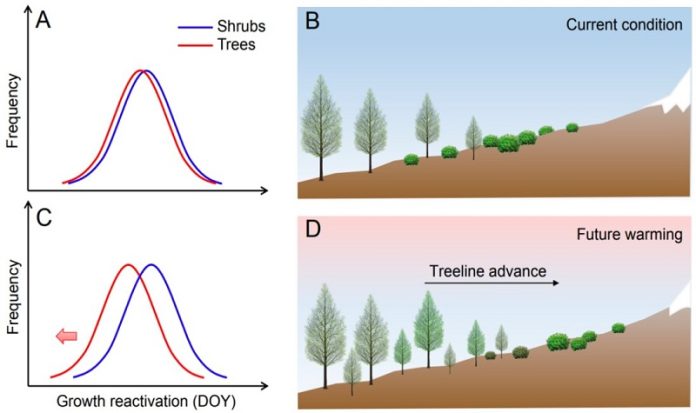
Climate change is causing many shifts in our ecosystems, one of which is the movement of trees and shrubs to higher altitudes.
The line where trees stop growing and only shrubs and smaller plants can live, known as the alpine treeline, is gradually moving upwards.
But, interestingly, trees seem to be beating shrubs in this uphill race.
A team of researchers, led by Professor Eryuan Liang from the Institute of Tibetan Plateau Research, Chinese Academy of Sciences, conducted a study to understand this phenomenon.
They observed the growth patterns of trees and shrubs living side by side at two treelines on the southeastern Tibetan Plateau for up to 10 years.
The team discovered that trees and shrubs responded differently to warmer spring temperatures. When spring warmed up by 1 degree Celsius, trees started growing 2-4 days earlier, while shrubs started growing 3-8 days later.
The reason behind this is that shrubs are more sensitive to the amount of cold or ‘chilling’ they experience. They need more warmth to start growing after a cold period compared to trees.
The researchers also analyzed data from 11 alpine treelines across the Northern Hemisphere. Their findings from the Tibetan Plateau held true: trees were more responsive to spring warming, and shrubs were more affected by cold periods.
What does this all mean? Well, climate change is causing a mismatch in growth patterns. As the climate warms, trees can start their growing season earlier, while shrubs lag behind.
This gives trees a competitive edge: they can grow more, absorb more carbon, and use resources better. As a result, trees could potentially move up the mountains faster than shrubs. This research is important to understand how climate change is reshaping our world.
This study also included researchers from Spain and Canada and was published in the National Science Review.
Follow us on Twitter for more articles about this topic.



